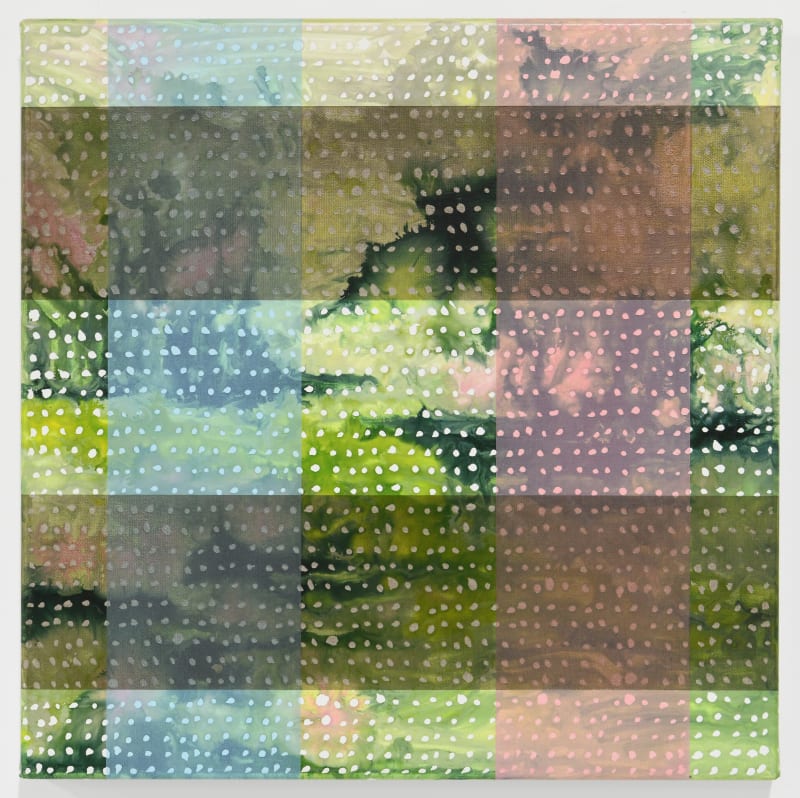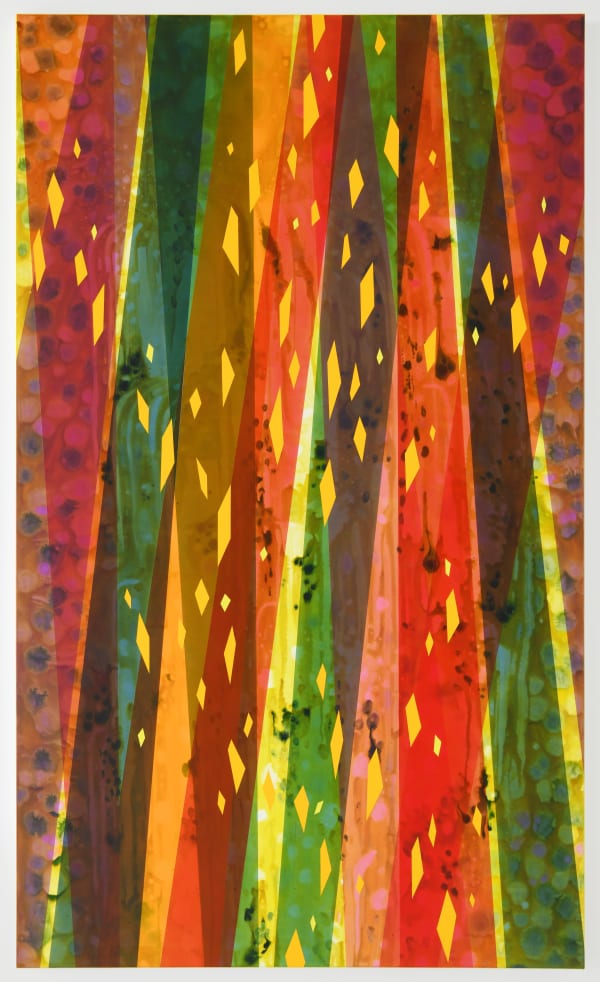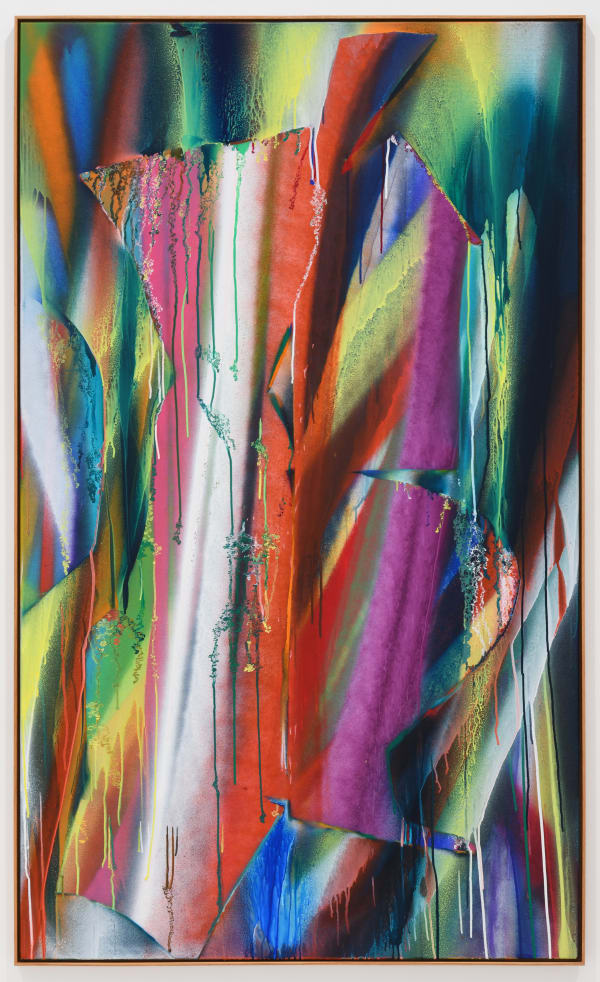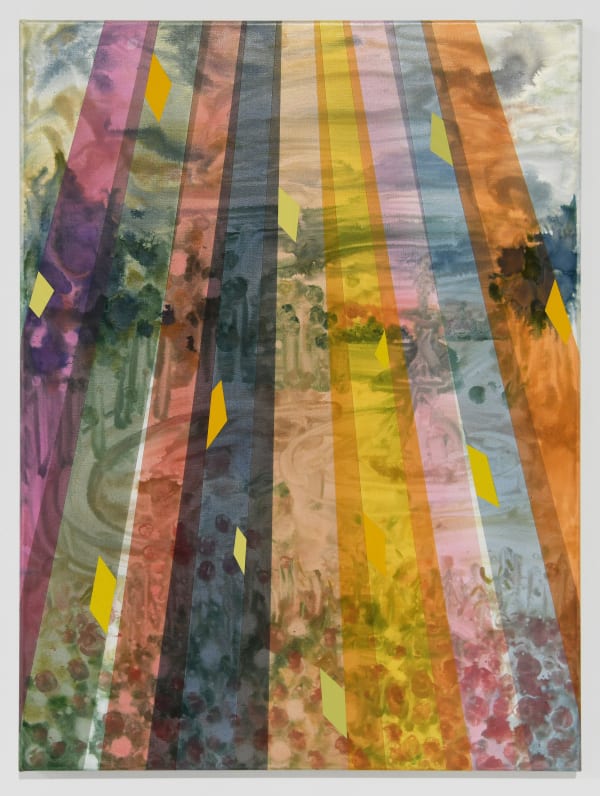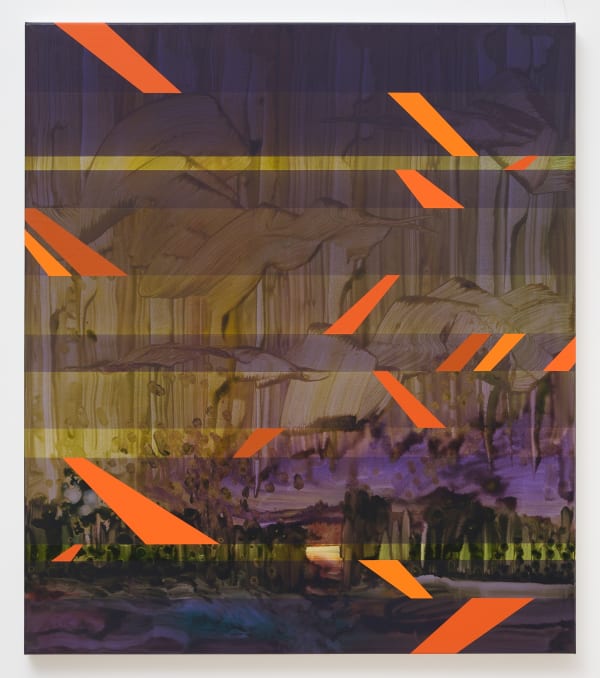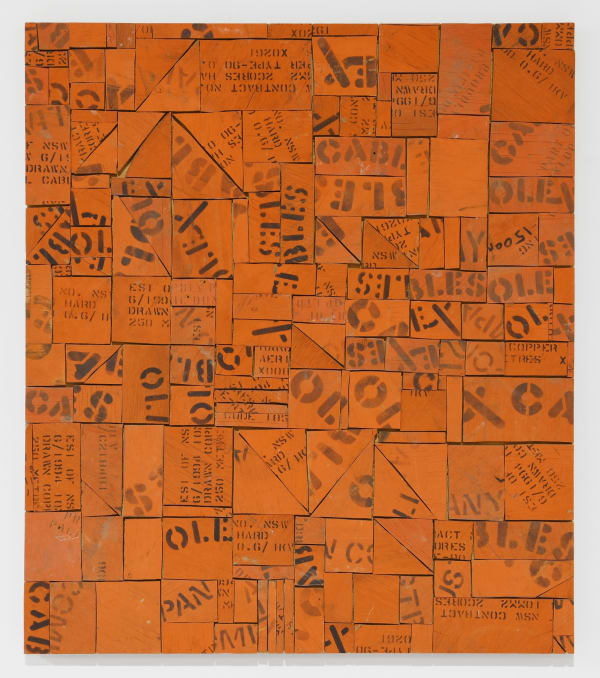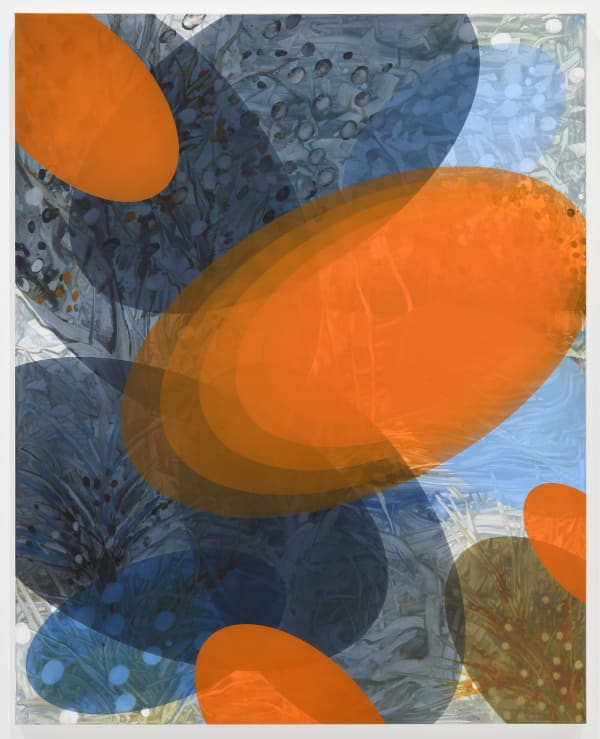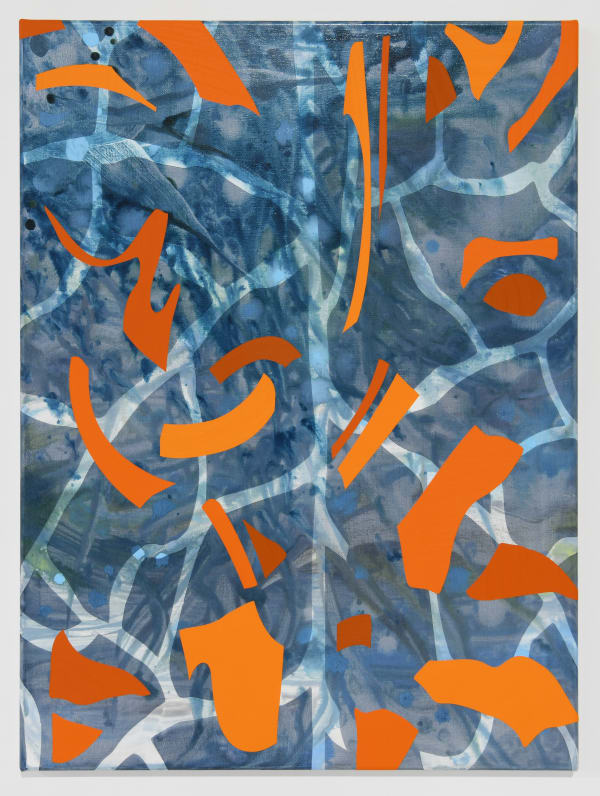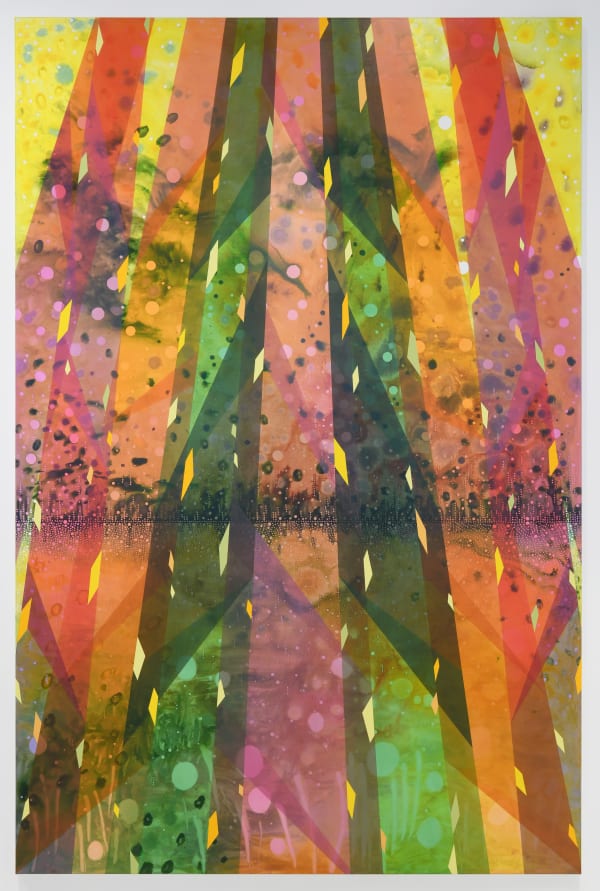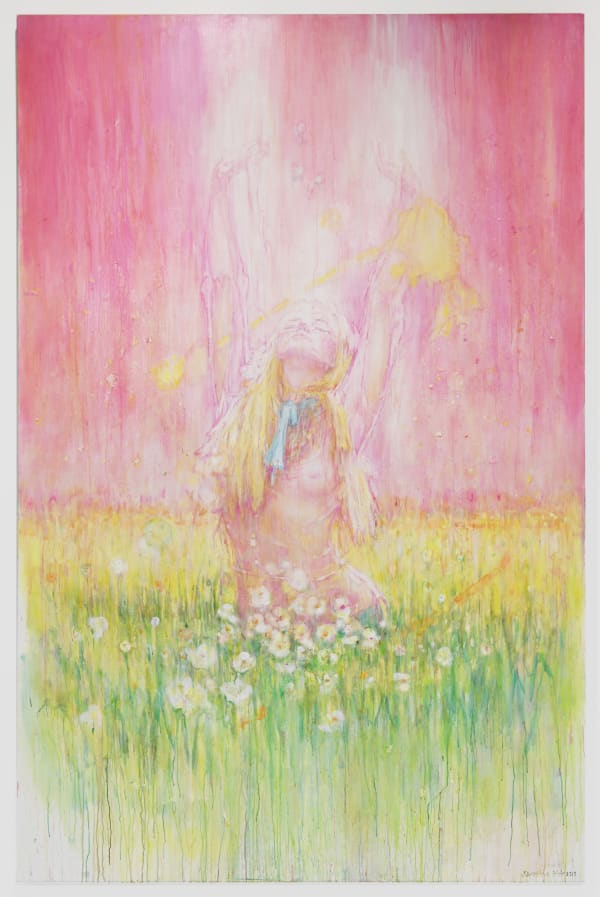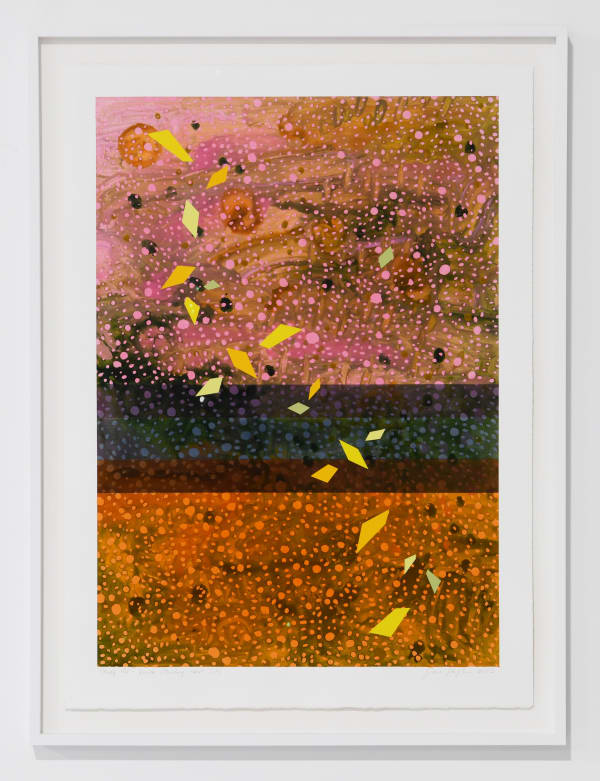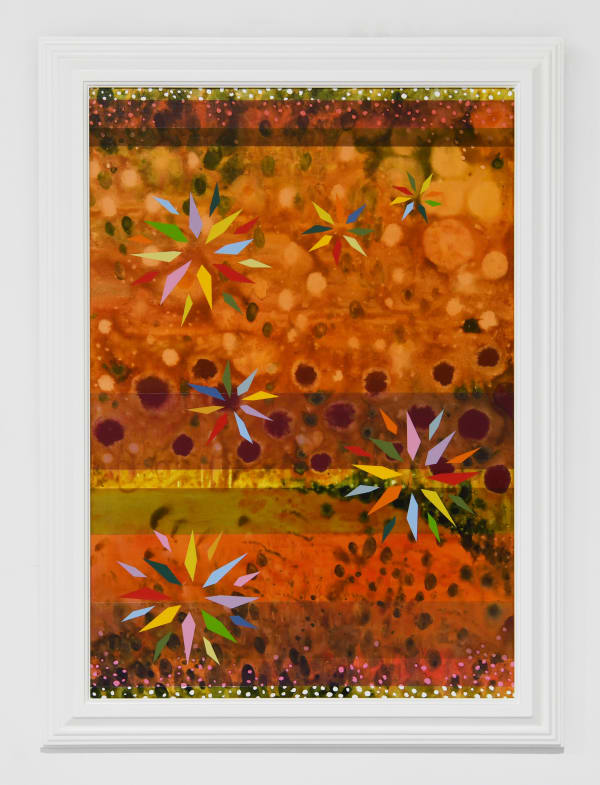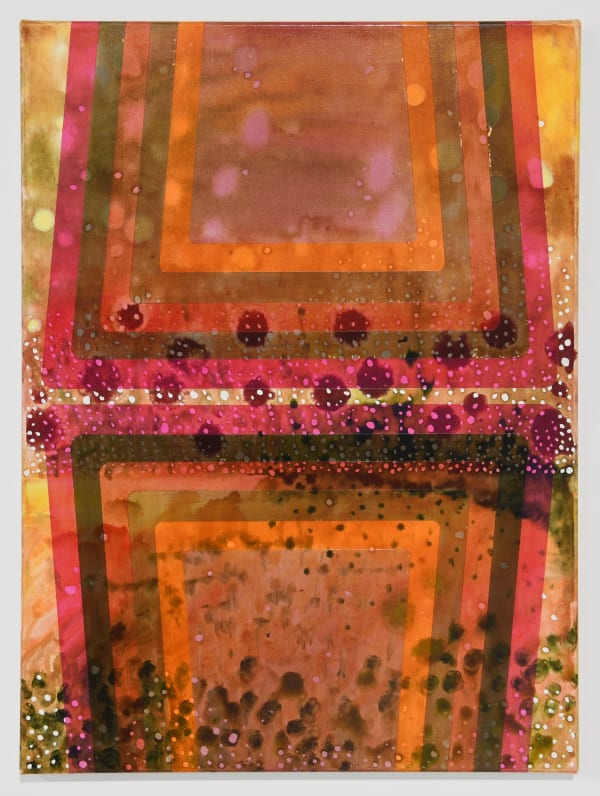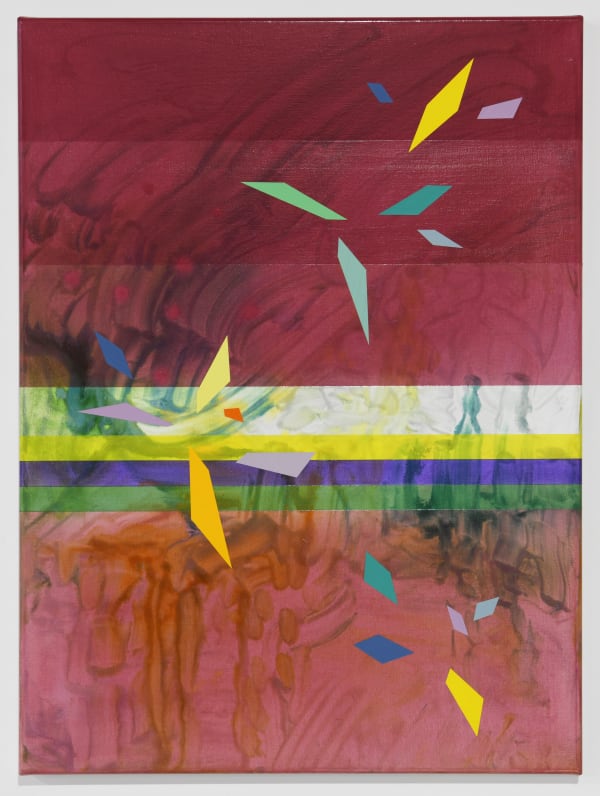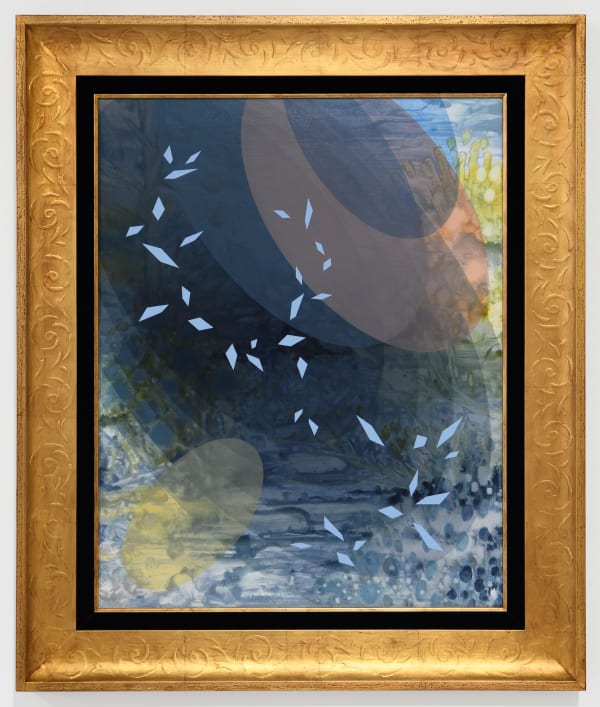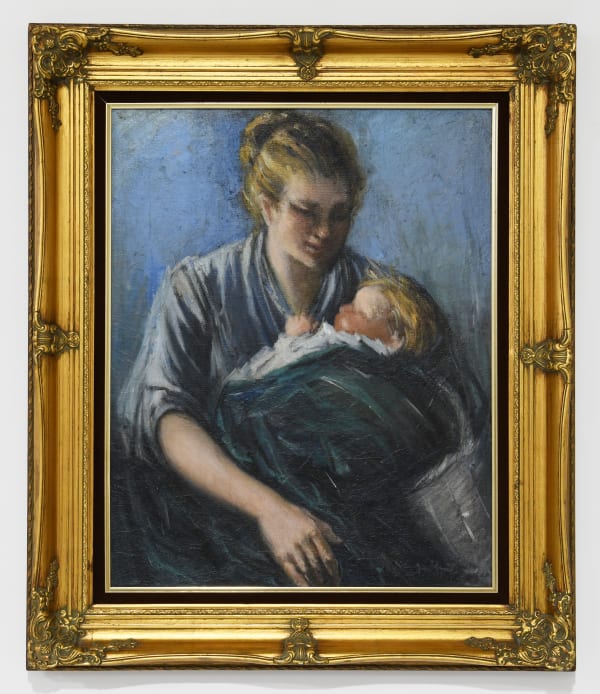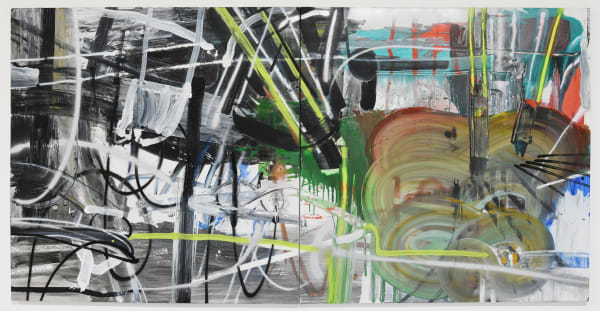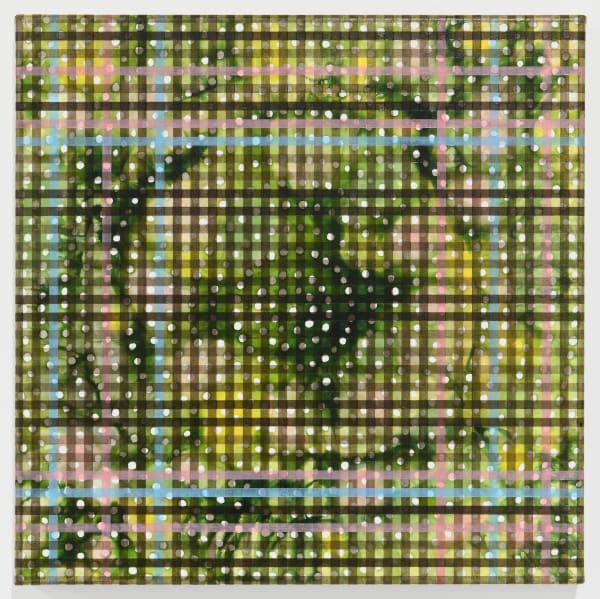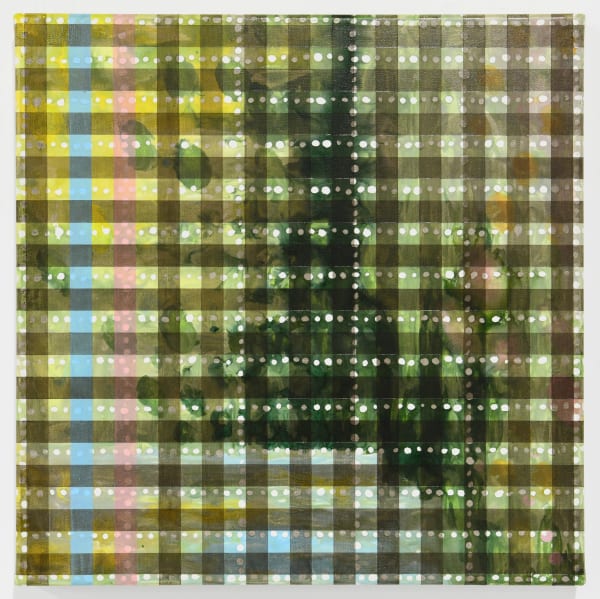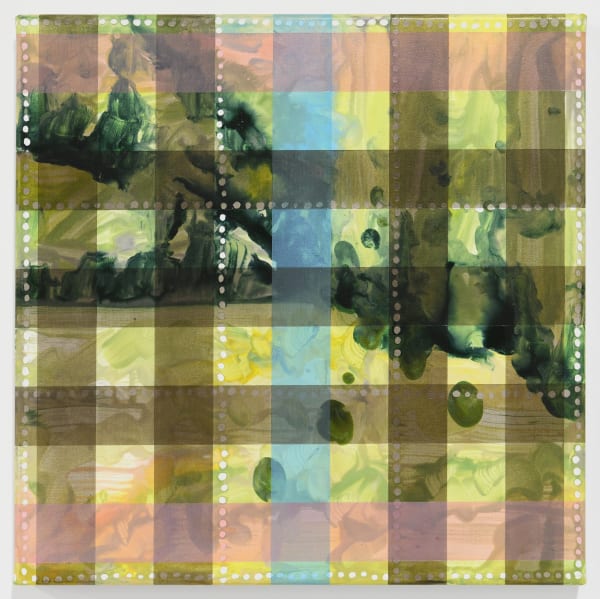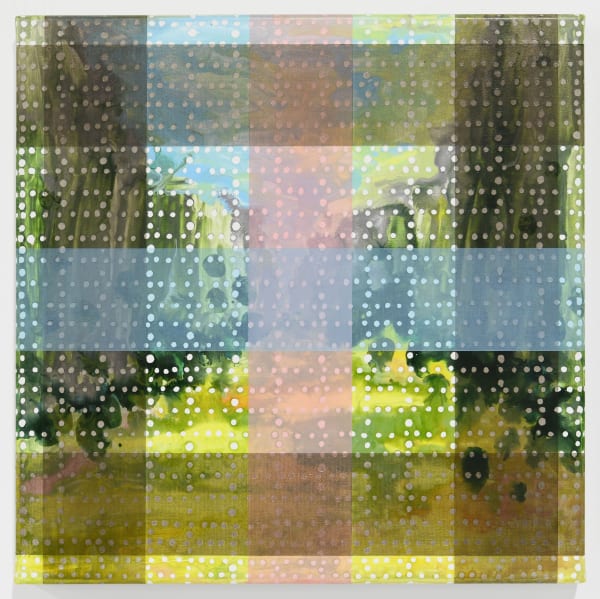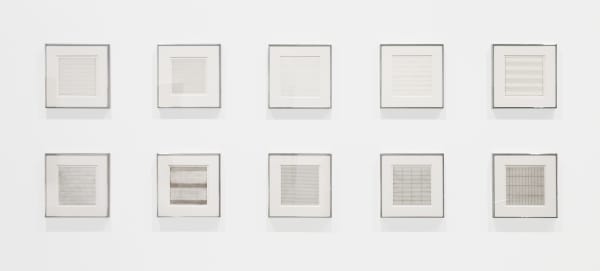Colour Memories: Sara Hughes
In Colour Memories, Sara Hughes presents a personal and reflective new body of work shaped by ideas of memory, influence, and artistic lineage. Developed over several years, the project emerged as Hughes marked a milestone birthday, prompting a deeper look at how her childhood, family, and long engagement with art have informed her practice.
Having spent formative periods living and working internationally before settling more permanently in Aotearoa New Zealand, Hughes brings a layered perspective to questions of place, identity, and creative inheritance. At the heart of this exhibition is a series of responses to the work of women artists who have significantly influenced her thinking and making—some encountered from afar, others from the past, and many through sustained admiration over time.
Hughes approaches this selection as a cross-generational conversation, using her own visual language to engage with the enduring influence of artists - Gretchen Albrecht, Mina Arndt, Phillipa Blair, Jacqueline Fahey, Rosalie Gascoigne, Katharina Grosse, Dame Louise Henderson, Frances Hodgkins, Agnes Martin, Séraphine Pick and Bridget Riley.
The exhibition brings together new works by Hughes alongside works by these artists, offering a layered reflection on how artistic influence is absorbed, reinterpreted, and carried forward through time.
We would like to extend our thanks to the collections who have loaned works for their generous contributions.
Read the accompanying exhibition essay Holding Others Within Her Frame by Dina Jezdić below.
-
 Sara Hughes, Huka Falls (Thinking of KG), 2025
Sara Hughes, Huka Falls (Thinking of KG), 2025 -
 Katharina Grosse, Untitled, 2017
Katharina Grosse, Untitled, 2017 -
 Sara Hughes, Study 2, Huka Falls (Thinking of KG), 2025
Sara Hughes, Study 2, Huka Falls (Thinking of KG), 2025 -
 Sara Hughes, Albert Park (Thinking of FH), 2025
Sara Hughes, Albert Park (Thinking of FH), 2025 -
 Frances Hodgkins, Still Life, c.1930
Frances Hodgkins, Still Life, c.1930 -
 Sara Hughes, Study, Albert Park (Thinking of FH), 2025
Sara Hughes, Study, Albert Park (Thinking of FH), 2025 -
 Sara Hughes, Desert Rd (thinking of RG), 2025
Sara Hughes, Desert Rd (thinking of RG), 2025 -
 Rosalie Gascoigne, Western Plains, 1998
Rosalie Gascoigne, Western Plains, 1998 -
 Sara Hughes, Study for Desert Rd (thinking about RG), 2025
Sara Hughes, Study for Desert Rd (thinking about RG), 2025 -
 Sara Hughes, Waitākere Ranges (Thinking of LH), 2025
Sara Hughes, Waitākere Ranges (Thinking of LH), 2025 -
 Dame Louise Henderson, Abstract in blue orange grey and black, c.1975
Dame Louise Henderson, Abstract in blue orange grey and black, c.1975 -
 Sara Hughes, Study 2, Waitakere Ranges (Thinking of LH), 2025
Sara Hughes, Study 2, Waitakere Ranges (Thinking of LH), 2025 -
 Sara Hughes, Santi Giovanni e Paolo, Venice (Thinking of SP), 2025
Sara Hughes, Santi Giovanni e Paolo, Venice (Thinking of SP), 2025 -
 Séraphine Pick, Easy Living, 2015
Séraphine Pick, Easy Living, 2015 -
 Sara Hughes, Study for Venice (thinking about SP), 2025
Sara Hughes, Study for Venice (thinking about SP), 2025 -
 Sara Hughes, Grey Lynn Park (Thinking of JF), 2025
Sara Hughes, Grey Lynn Park (Thinking of JF), 2025 -
 Jacqueline Fahey, Grandma and Emily, 1992
Jacqueline Fahey, Grandma and Emily, 1992 -
 Sara Hughes, Study, Grey Lynn Park (Thinking of JF), 2025
Sara Hughes, Study, Grey Lynn Park (Thinking of JF), 2025 -
 Sara Hughes, Wekaweka Valley (Thinking of GA), 2025
Sara Hughes, Wekaweka Valley (Thinking of GA), 2025 -
 Gretchen Albrecht, Yellow Line - Maroon Space, 1970
Gretchen Albrecht, Yellow Line - Maroon Space, 1970 -
 Sara Hughes, Study, Wekaweka Valley (Thinking of GA), 2025
Sara Hughes, Study, Wekaweka Valley (Thinking of GA), 2025 -
 Sara Hughes, Victoria Park (Thinking of MA), 2025
Sara Hughes, Victoria Park (Thinking of MA), 2025 -
 Mina Arndt, Mother and Child, 1919
Mina Arndt, Mother and Child, 1919 -
 Sara Hughes, Study, Queens Garden (Thinking of MA), 2025
Sara Hughes, Study, Queens Garden (Thinking of MA), 2025 -
 Sara Hughes, Ruakākā (Thinking of PB), 2025
Sara Hughes, Ruakākā (Thinking of PB), 2025 -
 Philippa Blair, Dancing Bear, 2009
Philippa Blair, Dancing Bear, 2009 -
 Sara Hughes, Study for Huka Falls (thinking about KG), 2025
Sara Hughes, Study for Huka Falls (thinking about KG), 2025 -
 Sara Hughes, Muriwai (Thinking of BR, 1), 2025
Sara Hughes, Muriwai (Thinking of BR, 1), 2025 -
 Bridget Riley, Bagatelle 3, 2015
Bridget Riley, Bagatelle 3, 2015 -
 Sara Hughes, Whanganui River (Thinking of AM, 1), 2025
Sara Hughes, Whanganui River (Thinking of AM, 1), 2025 -
 Sara Hughes, Whanganui River (Thinking of AM, 2), 2025
Sara Hughes, Whanganui River (Thinking of AM, 2), 2025 -
 Sara Hughes, Whanganui River (Thinking of AM, 3), 2025
Sara Hughes, Whanganui River (Thinking of AM, 3), 2025 -
 Sara Hughes, Whanganui River (Thinking of AM, 4), 2025
Sara Hughes, Whanganui River (Thinking of AM, 4), 2025 -
 Sara Hughes, Whanganui River (Thinking of AM, 5), 2025
Sara Hughes, Whanganui River (Thinking of AM, 5), 2025 -
 Sara Hughes, Whanganui River (Thinking of AM, 6), 2025
Sara Hughes, Whanganui River (Thinking of AM, 6), 2025 -
 Sara Hughes, Whanganui River (Thinking of AM, 7), 2025
Sara Hughes, Whanganui River (Thinking of AM, 7), 2025 -
 Sara Hughes, Whanganui River (Thinking of AM, 8), 2025
Sara Hughes, Whanganui River (Thinking of AM, 8), 2025 -
 Sara Hughes, Whanganui River (Thinking of AM, 9), 2025
Sara Hughes, Whanganui River (Thinking of AM, 9), 2025 -
 Sara Hughes, Whanganui River (Thinking of AM, 10), 2025
Sara Hughes, Whanganui River (Thinking of AM, 10), 2025 -
 Agnes Martin, Paintings and Drawings - Stedelijk Museum Portfolio, 1991
Agnes Martin, Paintings and Drawings - Stedelijk Museum Portfolio, 1991
Holding Others Within Her Frame
Essay by Dina Jezdić
Colour Memories unfolds as a conversation across generations — a chorus of women painters thinking and feeling across time. In this new body of work, Sara Hughes paints beyond self-expression, shaping her practice as a kind of communion: a way of thinking with others, of letting kinship itself become method. She reaches toward Gretchen Albrecht (b. 1943), Mina Arndt (1885–1926), Philippa Blair (1945–2025), Jacqueline Fahey (b. 1929), Rosalie Gascoigne (1917–1999), Katharina Grosse (b. 1961), Louise Henderson (1902–1994), Frances Hodgkins (1869–1947), Agnes Martin (1912–2004), Séraphine Pick (b. 1964), and Bridget Riley (b. 1931) — artists whose works, spanning more than a century, form the subterranean map of her imagination. To invite them into the studio is to expose the root system of artistic life, those unseen exchanges of influence, care, and inheritance that sustain creative growth. What emerges is a living ecology — a mycorrhizal network of women artists whose intertwined roots pass nourishment, memory, where their influence becomes an act of generosity, undoing the myth of the solitary genius.
These eleven interlocutors, sharing the same air, form a call and response across generations of women who have, through colour and form, found a language expansive enough to hold their interior worlds. The exhibition feels like a forest floor: dense, alive, and interconnected. In ecology, the mycorrhizal network, (from the Greek mykes/fungus and rhiza/root), describes the vast underground web through which trees and fungi exchange nourishment, water, and knowledge. It is an invisible intelligence, a system of reciprocity that allows entire ecosystems to thrive. Colour Memories tends to a similar network, one woven from influence, intuition, and care. Hughes’ paintings draw sustenance from the roots of those who came before, while enriching the soil for what will follow. This reciprocity transforms how we see: the works refuse the singular viewpoint, instead opening vision in multiple directions, above and below, within and beyond, as colour, perception, and memory slowly reveal their shared architecture.
The gesture of pairing Hughes’ paintings with those of other women is neither mimicry nor conventional homage, but an act of authorship — a curatorial gesture grounded in intimacy, research, and remembrance. Each pairing has been carefully chosen by Hughes herself, forming constellations of influence that stretch across time and geography. The selection is deeply personal: the Mina Arndt painting, for instance, has been loaned from The Suter Gallery in Nelson, a place bound to Hughes’ childhood memories of visiting with her grandmother — afternoons of rivers, ducks, and cheesecake folded into early encounters with art. Such moments of looking became the very architecture of her artistic life. In Colour Memories, each work is made at the same scale as the painting it responds to, so the relationship becomes both spatial and conceptual — a closeness that allows conversation to pass across the temporal threshold. Standing between the pairs, one feels the subtle pull of transmission, as if memory itself flows along the brushstrokes. Hughes’ practice is marked by precision, each layer of paint operating like a filament in a subterranean web, accumulating and overlapping. Her work reimagines the logic of landscape, inviting the viewer to dwell in the liminal space between what is seen and what is felt. Here, memory becomes material, and material becomes a vessel for remembrance.
In a time when solidarity is increasingly fragile, Hughes’ work reminds us that creativity, like ecology, flourishes through interdependence while celebrating the fertile disorder of coexistence. Dense with connections and exchanges, Colour Memories reimagines the canon as a living system — diverse, collaborative, resilient, a shared terrain where hierarchy dissolves. Her approach enacts an ethics of relational authorship, privileging relationship over competition, gratitude over mastery. For Hughes, painting is a way of thinking with, an inquiry into how knowledge is constructed, who tends its soil, and how it might be redistributed. Each work gestures toward permeability and vulnerability, acknowledging that identity, like the forest, is a composite form: one body nourished by many roots. The paintings hold the tension between self-assertion and absorption, between the desire to claim space and the humility to share it.
What emerges is an expanded map of influence, one that extends beyond museums into the intimate terrains of domestic life. Hughes’ surfaces become repositories of experience, both personal and collective, where memory and perception circulate like nutrients through a mycorrhizal network. The paintings glide and shift, slippery and porous, like memory itself — unreliable, mutable, yet deeply embodied. While the works draw their energy from landscape, they do not depict it. Instead, they enact its logic: the slow, reciprocal exchange between what is seen and what is felt. The valleys of her childhood, the rivers of the Hokianga, the green slopes of Grey Lynn Park persist here, transmuted into topographies of belonging, where landscape becomes a presence that inhabits us, coursing beneath the surface like unseen root system.
Drawing from a deeply researched engagement with eleven artworks that shaped her way of seeing, Colour Memories is not simply about influence; it is about inheritance as collaboration, about living within the echoes of others while composing one’s own voice. Louise Henderson’s organic geometry, Rosalie Gascoigne’s order from debris, Jacqueline Fahey’s insistence that the domestic is political, Gretchen Albrecht’s luminous expanses that once hung in Hughes’ childhood home — these are the roots and fungal threads of an alternative art history, one that grows laterally, inclusively, and without a single centre. Within this oscillation between influence and independence, Hughes’ paintings embody the complexity of living: how the personal bleeds into the political, how intimacy gives rise to monument, and how colour itself becomes a vessel for continuity, carrying forward gestures, ideas, and lives until they bloom anew.
Too often, colour has been dismissed as mere decoration — instinctive, emotional, feminine — when in fact it is one of the most rigorous systems of thought we possess. It demands discipline as much as intuition, precision as much as play. In Colour Memories, Hughes treats it like sediment in a riverbed: layers accumulate, carrying the traces of past gestures and the promise of future possibilities. Colour becomes both medium and message, a vessel for relational inheritance. Influence flows laterally, between women whose visions have shaped and sustained one another, insisting that art’s truest legacy is relational.
Hughes’ paintings map a cartography of power and continuation. They propose that the measure of an artist’s strength lies in generosity, in the capacity to hold others within her frame. To give thanks here is to place her foremothers at the same table, a gesture of acknowledgment: we are all here, still talking, thinking, and making. And in placing herself at the centre of this network, Hughes does not defer; she channels the voices of those before her while declaring her own vision, proving that generosity and authority can coexist in the same gesture.
